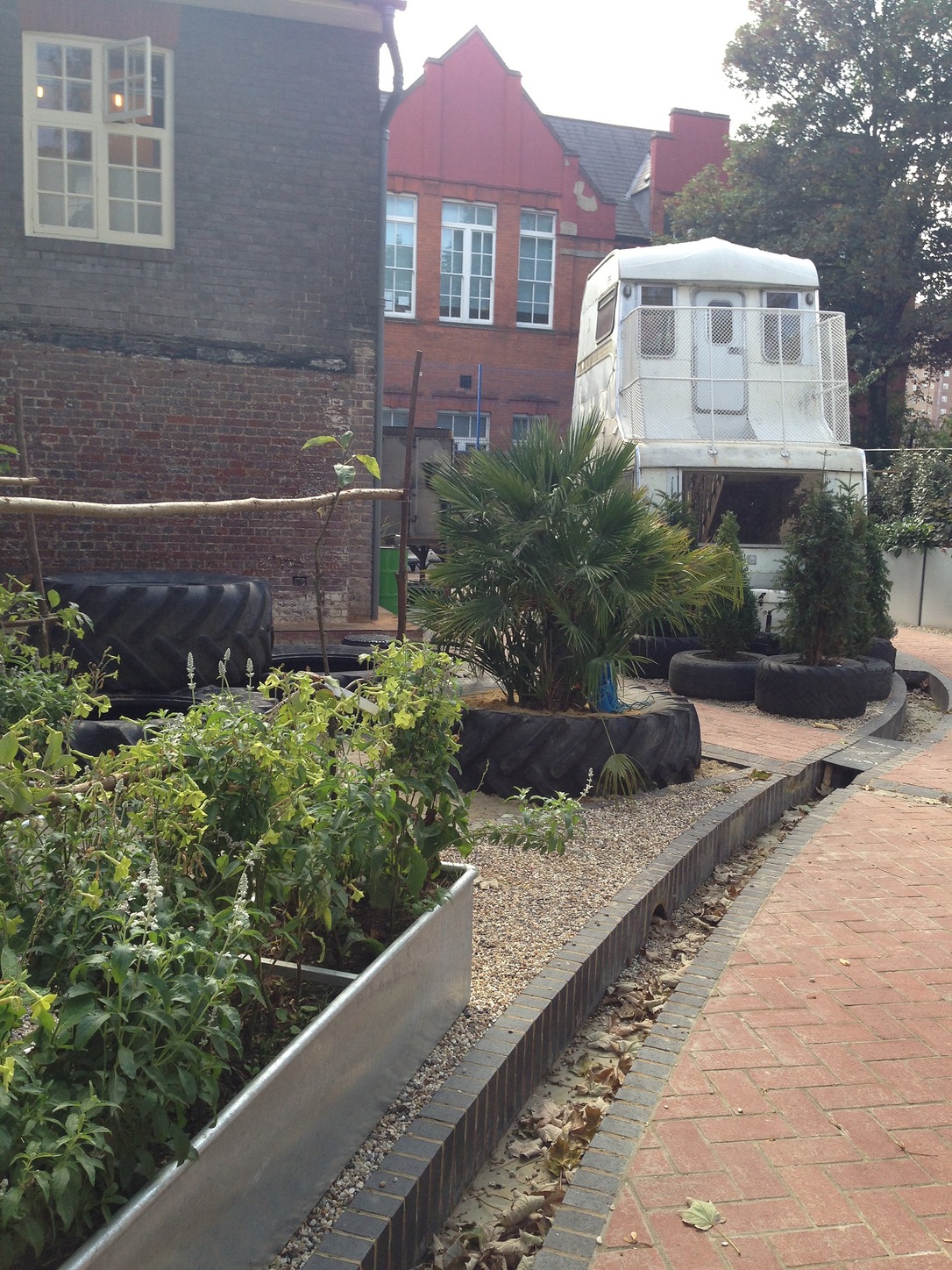
Finally, finally—scientific breakthroughs sorted and lectures delivered—a day for playgrounds. We’ve got some catching up to do. First up is the lovely Breaker’s Yard, newly installed at Sutton House, one of the National Trust’s only properties in London. What I love about it:
1. It represents work at the boundaries—overlapping garden and play. If you don’t get that reference, maybe watch the first part of my talk from London Open for Play 2012 The most interesting work in play happens at the boundaries; merging garden and playground, street and playground, gallery and playground (more on that later).
2. It honors a neglected part of local history. Play design is finally learning to respond to local context; even inexpensive playgrounds now attempt references to the history of their site. That is serious progress from when I started writing six years ago. But in a city like London, with many local history references from which to choose, how do you pick? Any site there has been many things over time. Our tendency is to pick the part of history that we like best; and that rarely includes the years of neglect or hardship that most long-occupied urban sites have experienced.
But instead of re-creating the tidy back garden of a 16th century Tudor courtier’s house (which is what Sutton House is), this play garden reflects its past as what we in the US would call a junk or scrap yard—a breaker’s yard. That’s a part of history most historic sites would try to forget. The Sutton House play garden engages it, with tires that serve as sand and plant boxes and seats, a welded steel gate–cleverly angled to control the views of passersby—that includes tiny toy cars, and yes, a discarded CARAVAN that functions as a play house, amped up with an elaborately carved fireplace mantel and a spindled staircase; a cheeky reference to the stately homes that are the National Trust’s usual stock in trade.. It’s brilliant, but according to London-based playground expert Tim Gill, it was the piece of the project that almost didn’t get approval. Is it the only abandoned caravan on premises of the oh-so-proper National Trust? I think it might be. Huzzah!
3. Community engagement AND access. Credit goes to Christopher Cleeve of Sutton House for managing this innovative project–which hopefully will serve as a model for play at other National Trust sites–including the selection of the scrap yard landscape (rather than say, a Tudor knot garden) because it was a reference within the recent memory of local residents. Chris has also ensured that locals have free access, without needing to pass through the house, via a back gate, so that the space can truly be a part of the community. Daniel Lobb along with Deborah Curtis and Gavin Turk of House of Fairy Tales designed the landscape, including the playground essentials of sand and water, which sit alongside edible garden beds, an ice cream van, and space for grown-ups to sit in the sun and enjoy the play.
The post Breaker’s Yard, Sutton House, Hackney London, 2014 appeared first on Playscapes.